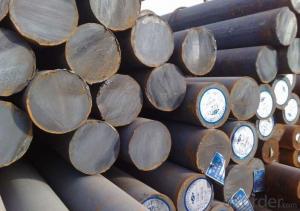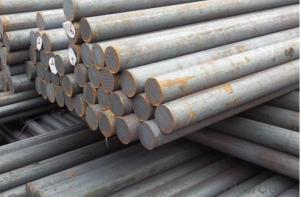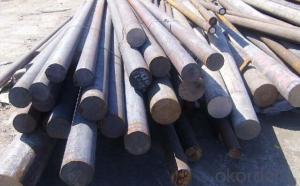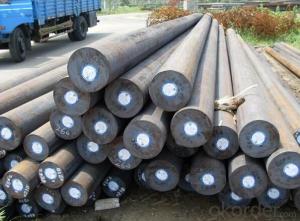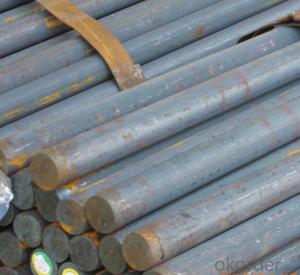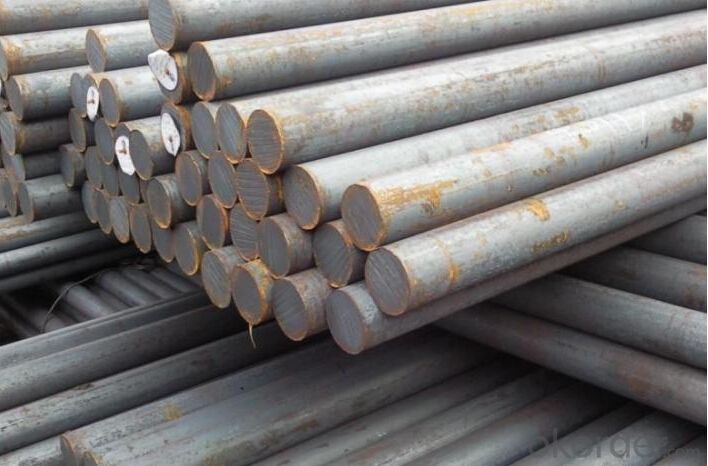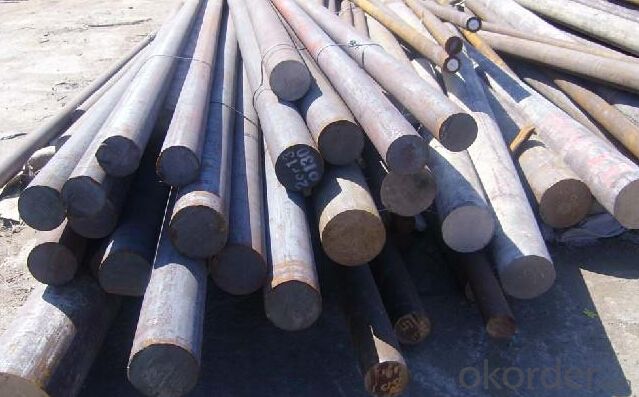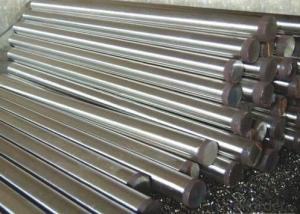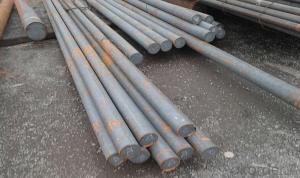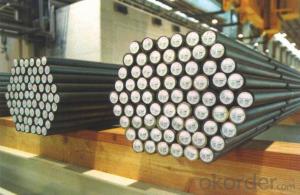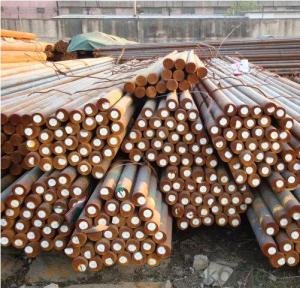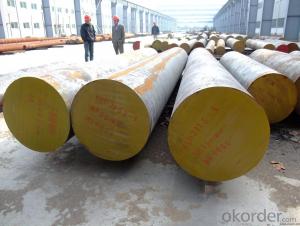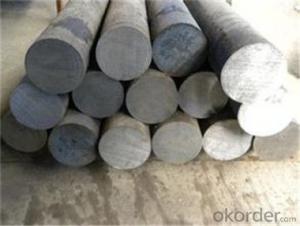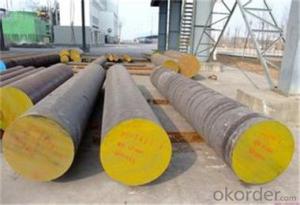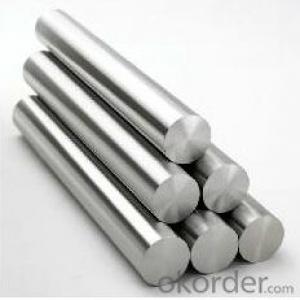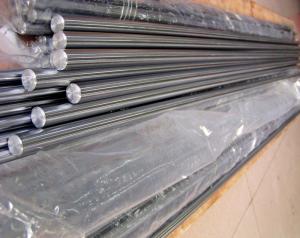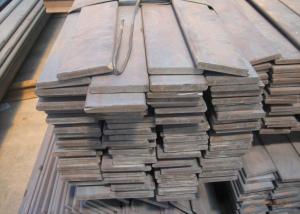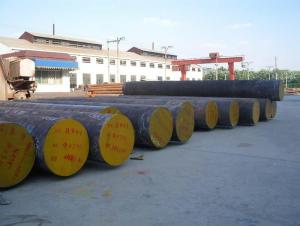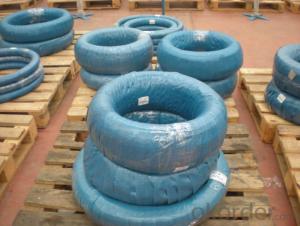SKD11 Hot rolled steel rod price,1.2379 steel round bar
- Loading Port:
- Tianjin
- Payment Terms:
- TT OR LC
- Min Order Qty:
- 3 m.t.
- Supply Capability:
- 10000 m.t./month
OKorder Service Pledge
OKorder Financial Service
You Might Also Like
Specification
Hot Rolled Mild Steel Round Bar Q235 Q345 Q355
Name | SAE1045 Carbon Steel Round Bar |
Shape | Round Bar/Square Bar/Flat Bar/Plate/Wire |
Standard | GB/ASTM/SAE/AISI/DIN/JIS/EN/BS |
Surface Treatment: | Black/Peeling/Polished/Machined |
Delivery Condition: | Hot Rolled or Forged/Peeled or Black Surface |
Test | SGS/UT 100% Elements Testing |
Certificate: | ISO/Mill Certificate |
Service: | 24 hours online service / |
more than 20 years trading and manufacture | |
Quality Assurance: | the third party inspection, such as SGS, BV, TUV…etc. is acceptable |
Packaging Details: | seaworthy packaging or as per customer's packing instruction |
Chemical Composition
C | Si≤ | Mn≤ | P≤ | S≤ | Cr | Mo | V |
1.40~1.60 | 0.4 | 0.6 | 0.030 | 0.030 | 11.0~13.0 | 0.80~1.20 | 0.20~0.50 |
Features of skd11 steel
(1) Good quenching resistance, heat deformation small, wear-resistant, impact resistant.
(2) Vacuum degassing refining processing pure steel.
(3) Spheroidizing softening process, good cutting performance.
(4) Strengthen the elements vanadium, molybdenum special join, is extremely excellent in wear resistance.
Packaging & Delivery
Packaging Detail | Sea worthy packing /as per customer's packing instruction |
Delivery Detail | 15 ~ 40 days after receiving the deposit |
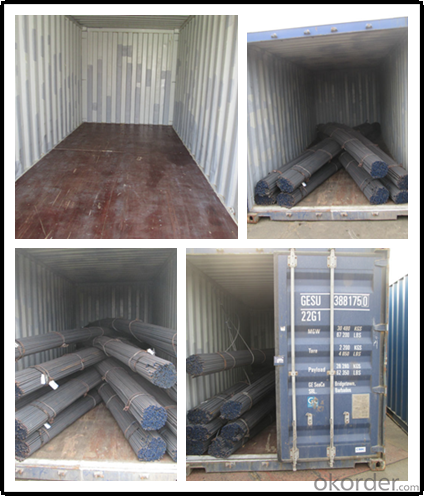
Product Show
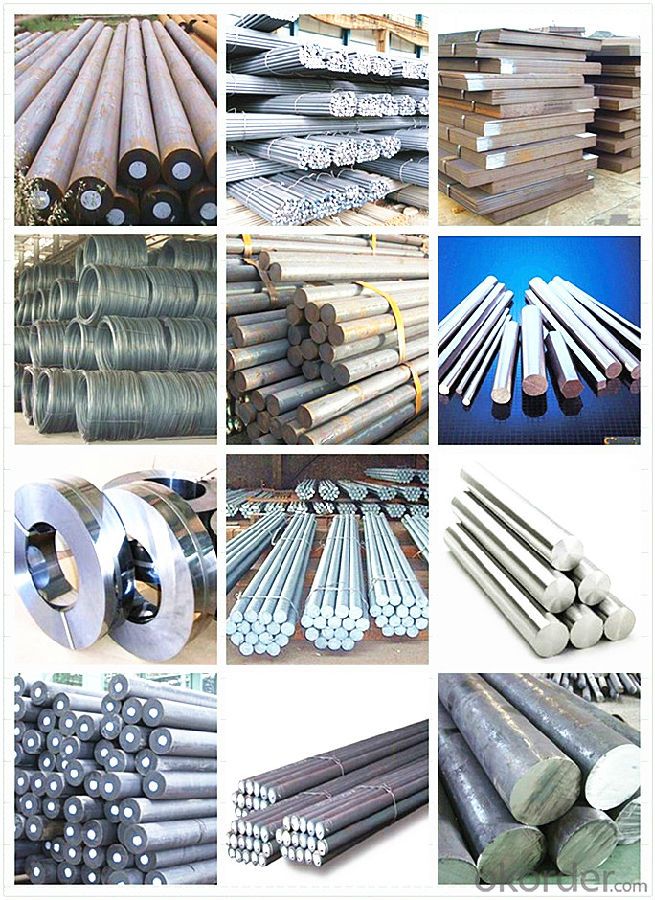
Workshop
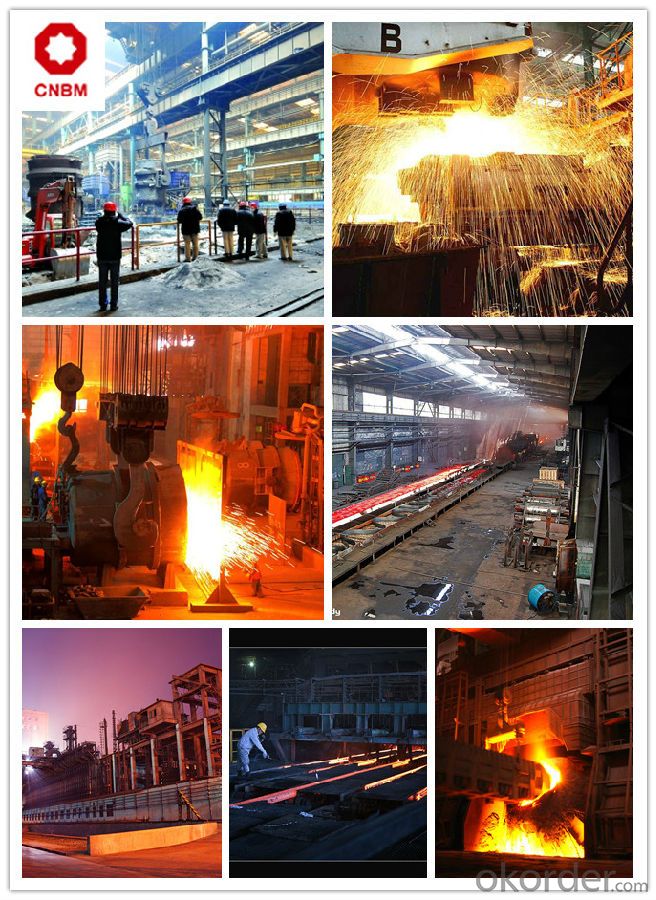
FAQ
Are you a trading company or manufacturer? | Manufacturer |
What’s the MOQ? | 3 metric ton |
What’s your delivery time? | 15-35 days after downpayment received |
Do you Accept OEM service? | Yes |
what’s your delivery terms? | FOB/CFR/CIF |
What's the Payment Terms? | 30% as deposit,70% before shipment by T/T |
Western Union acceptable for small amount. | |
L/C acceptable for large amount. | |
Scrow ,Paybal,Alipay are also ok | |
Why choose us? | Chose happens because of quality, then price, We can give you both. |
Additionally, we can also offer professional products inquiry, products knowledge train (for agents), smooth goods delivery, excellent customer solution proposals. | |
What's your available port of Shipment? | Main Port, China |
What’s your featured services? | Our service formula: good quality+ good price+ good service=customer's trust |
Where are your Market? | Covering more than 160 countries in the world |
- Q: What are the non-destructive testing methods used for special steel?
- Some of the non-destructive testing methods used for special steel include ultrasonic testing, magnetic particle testing, liquid penetrant testing, and radiographic testing. These methods allow for the detection of defects, cracks, or other imperfections in the steel without causing any damage to the material itself.
- Q: How does special steel perform in stamping applications?
- The unique properties of special steel make it an excellent choice for stamping applications. Its high strength and durability ensure that it can withstand wear and tear during the stamping process, resulting in longer tool life and reduced maintenance costs. Additionally, special steel's heat resistance allows it to maintain its structural integrity even at high temperatures, preventing warping or deformation. Its exceptional dimensional stability ensures precise and consistent results, while its excellent formability allows for the creation of intricate designs. Overall, special steel's properties make it a reliable and versatile option for a wide range of stamping applications.
- Q: What are the different methods for improving the toughness of special steel?
- There are multiple approaches that can be utilized to enhance the toughness of special steel. Among the most effective techniques is the utilization of alloying. By incorporating specific elements like nickel, chromium, or molybdenum into the steel composition, the toughness can be greatly enhanced. These alloying elements aid in increasing the strength and resistance to cracking and fracture. Another method involves employing heat treatment processes. For instance, one can utilize quenching and tempering to improve the toughness of the steel. Quenching entails rapidly cooling the steel from a high temperature to room temperature, resulting in a hardened structure. Subsequently, tempering takes place, where the steel is reheated to a precise temperature and then slowly cooled. This process helps alleviate internal stresses and enhance the toughness of the steel. Furthermore, refining the microstructure of the steel can also amplify its toughness. Techniques like grain refinement, which encompass reducing the size of the grains in the steel, can lead to improved toughness. This is due to the fact that smaller grains hinder the propagation of cracks, making the steel more resistant to fracture. Lastly, special steel can undergo processes such as shot peening or surface hardening to augment its toughness. Shot peening involves bombarding the steel's surface with tiny metallic or ceramic particles, inducing compressive stresses and enhancing resistance to crack initiation. Surface hardening techniques like carburizing or nitriding can generate a hardened layer on the steel's surface, increasing its toughness and wear resistance. In conclusion, the various methods for enhancing the toughness of special steel encompass alloying, heat treatment processes, microstructure refinement, and surface treatments. Each of these techniques can be customized to meet the specific requirements of the steel and achieve the desired level of toughness.
- Q: Can special steel be used in the production of fasteners?
- Yes, special steel can be used in the production of fasteners. Special steel, such as stainless steel or alloy steel, offers enhanced strength, corrosion resistance, and durability, making it suitable for various fastening applications in industries like automotive, aerospace, and construction.
- Q: What is the cost of special steel compared to other materials?
- The price of special steel can vary depending on various factors when compared to other materials. Special steel, also known as alloy steel or tool steel, is generally more expensive than regular carbon steel due to its superior properties and composition. Its strength, durability, and resistance to wear and corrosion make it ideal for specialized applications in industries like automotive, aerospace, and construction. In comparison to non-ferrous metals like aluminum or copper, special steel often has a lower cost. However, it is important to note that different types of special steel can have different price ranges. For example, stainless steel, which contains chromium and other elements for better corrosion resistance, tends to be pricier than carbon steel. When comparing the cost of special steel to materials like plastics or composites, it is crucial to assess the specific project requirements. While these alternatives may have lower initial costs, they may not possess the same level of strength, heat resistance, or durability as special steel. Therefore, the long-term benefits and savings offered by special steel, such as reduced maintenance, longer lifespan, and improved performance, should also be considered. Ultimately, the price of special steel compared to other materials is influenced by factors such as the type and grade of steel, market demand, quantity needed, and any additional processing or finishing required. Consulting with suppliers, considering the specific application requirements, and conducting a comprehensive cost-benefit analysis will help determine the most suitable and cost-effective material choice for a particular project.
- Q: How is special steel used in the railway supply chain?
- Special steel is used in the railway supply chain for various critical components such as rails, wheels, and axles, due to its superior strength, durability, and resistance to wear and fatigue. This high-quality steel ensures safe and reliable train operations, reducing maintenance needs and increasing the lifespan of railway infrastructure.
- Q: What are the specific requirements for special steel used in the marine industry?
- For the marine industry, special steel must meet specific criteria to be suitable for the harsh marine environment. These criteria encompass high strength, corrosion resistance, and toughness. First and foremost, the special steel used in the marine industry must possess high strength to endure the extreme loads and stresses encountered at sea. This strength enables the steel to resist deformation and maintain its structural integrity when subjected to heavy loads, such as the weight of the ship or the forces exerted by waves and wind. Corrosion resistance is another crucial requirement for marine-grade steel. The highly corrosive nature of saltwater presents a significant challenge. Marine-grade steel should exhibit exceptional resistance to corrosion, preventing the formation of rust and other forms of degradation. This resistance ensures the longevity of steel structures and reduces maintenance and repair costs. Furthermore, toughness is an essential characteristic of marine-grade steel. It must be capable of withstanding impact and shock loads, as ships and offshore structures are constantly exposed to rough seas and potential collisions. The steel should possess the ability to absorb and distribute energy without fracturing or failing, guaranteeing the safety and reliability of marine structures. In addition to these requirements, special steel used in the marine industry must also adhere to specific standards and certifications established by classification societies such as the American Bureau of Shipping (ABS), Lloyd's Register (LR), or Det Norske Veritas Germanischer Lloyd (DNV GL). These organizations establish standards for materials, construction, and inspection processes to ensure the dependability and safety of marine structures. Overall, the specific requirements for special steel utilized in the marine industry encompass high strength, corrosion resistance, toughness, and compliance with industry standards and certifications. Fulfilling these requirements guarantees the steel's ability to withstand the distinct challenges posed by the marine environment and contributes to the safety and durability of marine structures.
- Q: How does special steel contribute to the manufacturing of cutting tools?
- Special steel plays a crucial role in the manufacturing of cutting tools due to its unique properties and characteristics. Firstly, special steel, also known as tool steel, exhibits high hardness, which allows it to withstand the tremendous forces and stress exerted during cutting operations. This hardness prevents the cutting tools from deforming or wearing out quickly, ensuring their longevity and efficiency. Additionally, special steel possesses excellent wear resistance. Cutting tools are subjected to constant friction and abrasion while in use, and the high wear resistance of special steel helps to minimize the wear and tear on the tools. This, in turn, leads to improved tool life, reducing the frequency of tool replacements and enhancing cost-effectiveness in the manufacturing process. Furthermore, special steel offers superior heat resistance. Cutting tools generate significant heat during machining operations, which can lead to thermal degradation and loss of hardness in conventional steels. However, special steel can withstand high temperatures without compromising its hardness and integrity. This heat resistance allows cutting tools to maintain their performance even under extreme heat conditions, ensuring consistent and precise cutting results. Moreover, the special steel used in cutting tool manufacturing often exhibits excellent toughness and strength. This enables the tools to endure heavy loads and impacts without fracturing or chipping. The combination of hardness, wear resistance, heat resistance, toughness, and strength provided by special steel ensures the durability and reliability of cutting tools, allowing them to perform efficiently and accurately. Overall, special steel significantly contributes to the manufacturing of cutting tools by providing the necessary properties to withstand the demanding conditions encountered during cutting operations. Its high hardness, wear resistance, heat resistance, toughness, and strength ensure that cutting tools remain sharp, durable, and efficient, thereby enhancing productivity and precision in various industries, such as automotive, aerospace, and manufacturing.
- Q: What are the different carburizing techniques used for special steel?
- There are several carburizing techniques used for special steel, including gas carburizing, pack carburizing, liquid carburizing, and vacuum carburizing. Each technique involves introducing carbon into the surface of the steel to enhance its hardness and wear resistance. Gas carburizing involves heating the steel in a controlled atmosphere of carbon-rich gas, while pack carburizing entails surrounding the steel with a mixture of carbon-rich material and heating it. Liquid carburizing involves immersing the steel in a bath of molten salts or other carbon-rich liquid, and vacuum carburizing utilizes a low-pressure environment to introduce carbon into the steel's surface. These techniques are chosen based on the specific requirements of the steel and the desired end properties.
- Q: What are the common techniques for testing the quality of special steel?
- Several techniques are commonly used to test the quality of special steel, ensuring that it meets the necessary specifications and standards for its intended use. Among the most prevalent methods are: 1. Chemical Analysis: This technique involves analyzing the steel's composition to determine the concentration of different elements present. By conducting chemical analysis, it is possible to ensure that the steel contains the necessary elements in the desired quantities and to identify any impurities that might impact its quality. 2. Tensile Testing: Tensile testing is utilized to measure the strength and elasticity of steel. It entails subjecting a sample of the steel to an increasing load until it breaks. This helps establish the maximum stress the steel can endure before failure, providing valuable insights into its mechanical properties. 3. Hardness Testing: The purpose of hardness testing is to assess a steel's resistance to indentation or penetration. It aids in evaluating the steel's strength and its ability to withstand wear and deformation. Common hardness testing methods include the Brinell, Rockwell, and Vickers tests. 4. Microstructure Examination: Through microstructure examination, the internal structure of the steel is analyzed under a microscope. This technique helps identify the presence of defects such as inclusions, voids, or improper grain structure. Additionally, it provides information about the steel's overall quality and its heat treatment. 5. Non-Destructive Testing (NDT): NDT techniques are widely employed to test the quality of special steel without causing damage to the material. Ultrasonic testing, magnetic particle testing, liquid penetrant testing, and radiographic testing are some examples of NDT methods. These techniques enable the detection of surface or internal defects, cracks, and discontinuities that may compromise the steel's integrity. 6. Impact Testing: Impact testing measures a steel's ability to absorb energy under high-stress conditions. It involves striking a notched sample with a pendulum and measuring the energy absorbed during fracture. This type of testing provides valuable insights into the steel's toughness and its resistance to sudden shocks or impacts. 7. Corrosion Testing: Corrosion testing is conducted to evaluate a steel's resistance to corrosion in different environments. It helps determine the steel's susceptibility to rust, oxidation, or chemical attack, which is crucial for applications in corrosive settings. By employing these commonly used techniques, manufacturers and quality control professionals can ensure that special steel meets the required standards and specifications, guaranteeing its reliability and performance in various industries and applications.
Send your message to us
SKD11 Hot rolled steel rod price,1.2379 steel round bar
- Loading Port:
- Tianjin
- Payment Terms:
- TT OR LC
- Min Order Qty:
- 3 m.t.
- Supply Capability:
- 10000 m.t./month
OKorder Service Pledge
OKorder Financial Service
Similar products
Hot products
Hot Searches
Related keywords

